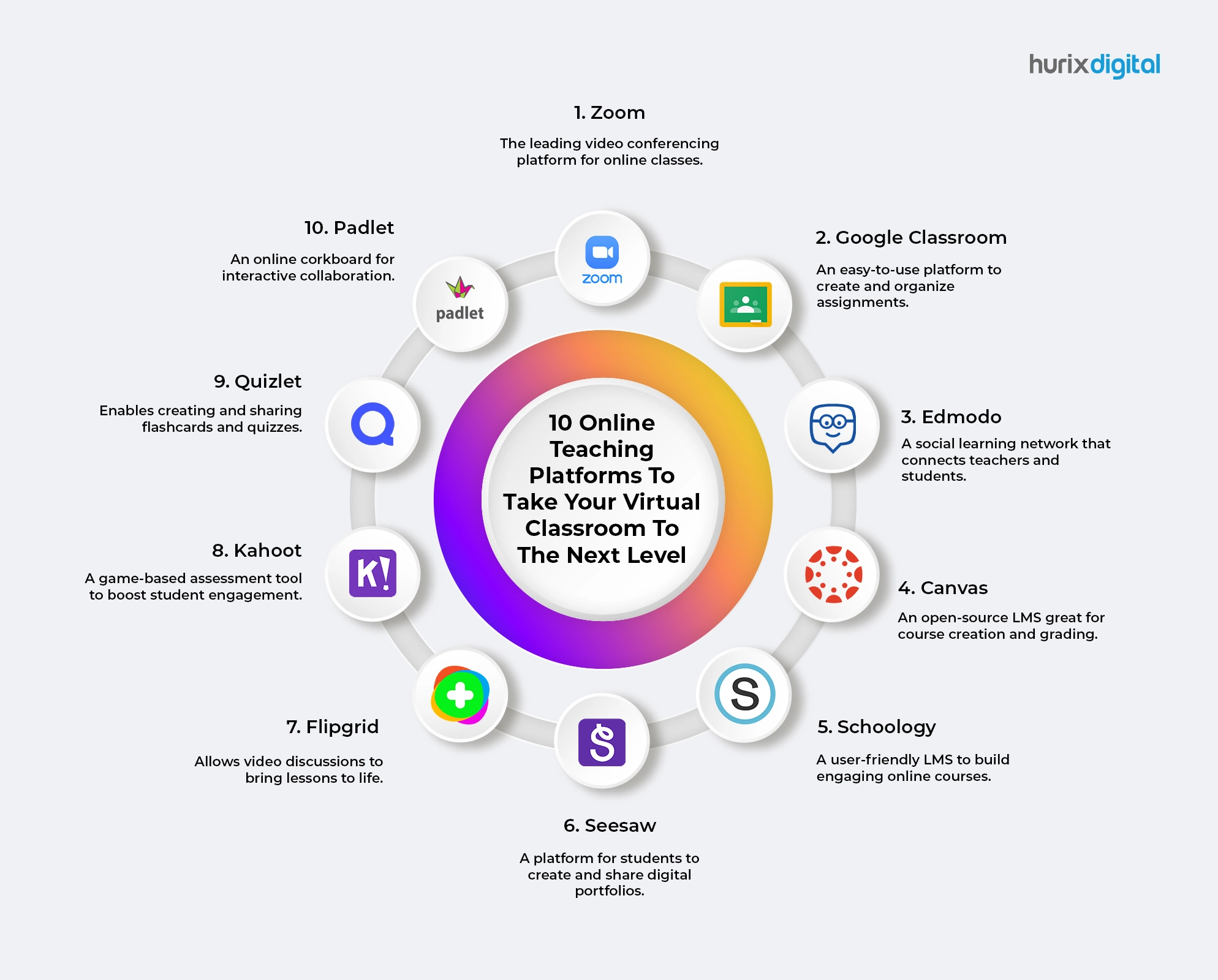The shift to digital learning has increased the demand for online teaching platforms that support virtual classrooms, interactive learning, and student engagement. These platforms help educators streamline lesson delivery, assessments, and communication while providing students with flexible learning opportunities.
Selecting the right online teaching platform depends on factors like ease of use, collaboration tools, content management, and integration with other educational resources.
Want to bring your virtual classroom to life? Let Hurix Digital help. Contact Us Now to get started with impactful solutions for online teaching and learning.

Why Online Teaching Platforms Matter
Online learning tools make education accessible and efficient. The right platform offers:
- Seamless communication between teachers and students.
- Collaboration tools for group activities and discussions.
- Assessment features to track progress and improve learning outcomes.
- Engagement boosters like gamification, video integration, and real-time interaction.
Key Features of Online Teaching Platforms
1. Live Video Conferencing
Virtual classrooms require real-time interaction. Platforms with high-quality video and audio ensure clear communication, allowing teachers to host lectures, discussions, and Q&A sessions.
2. Course Management
A structured system for organizing lessons, assignments, and grading makes content delivery smoother. Cloud-based storage ensures students can access materials anytime.
3. Interactive Engagement Tools
Gamified quizzes, discussion boards, and polls keep students engaged. Platforms that support multimedia content enhance learning experiences.
4. Mobile Accessibility
Students need access to lessons on various devices. A responsive platform ensures that content is optimized for smartphones, tablets, and desktops.
5. Assessment and Feedback System
Automated grading, real-time feedback, and analytics help educators track student performance and adjust teaching strategies.
Choosing the Right Online Teaching Platform
Educators should consider:
✔ User-friendly design – Easy navigation improves adoption rates.
✔ Integration with third-party apps – Compatibility with tools like Google Drive and Microsoft Teams enhances functionality.
✔ Security and privacy – Data protection is essential, especially for student information.
✔ Cost-effectiveness – Free and paid options offer different features based on institutional needs.
Final Thoughts
Online teaching platforms enhance virtual learning by providing structured, interactive, and engaging educational experiences. Whether for schools, universities, or training programs, selecting the right platform ensures efficiency and accessibility in digital education.



